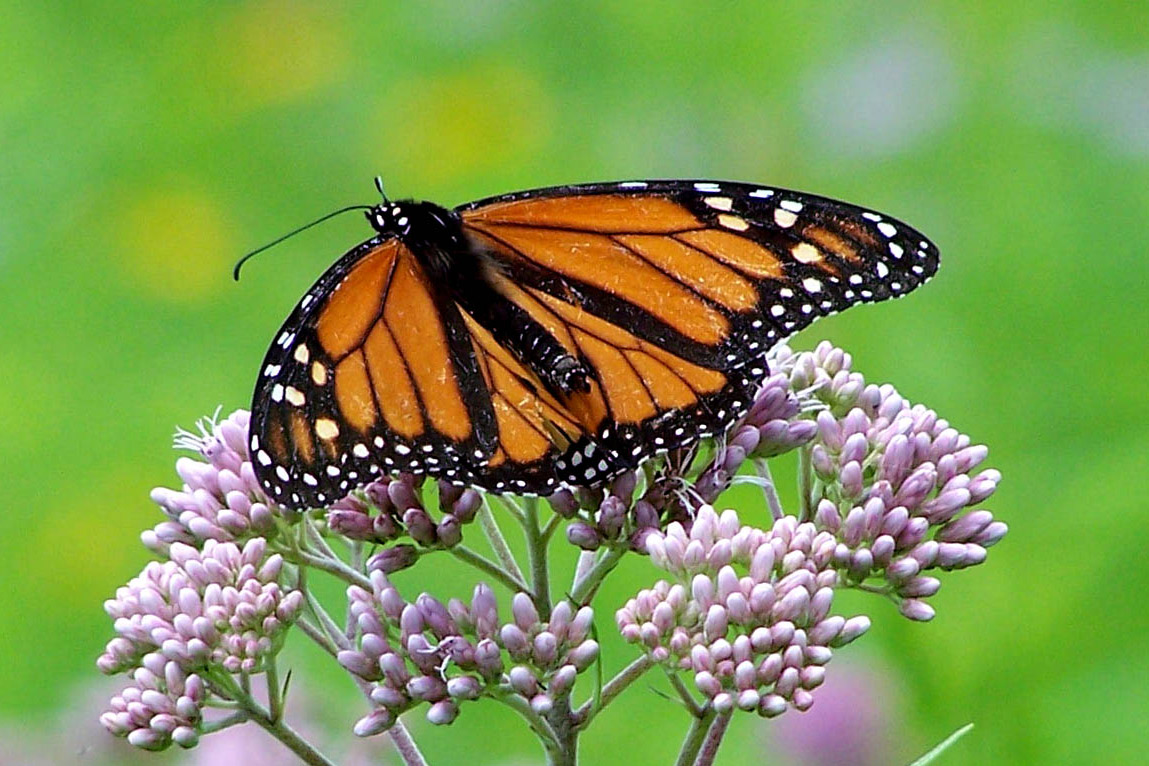by Mike Reese, wisconsinbutterflies.org
Wisconsin is home to about 124 species of butterflies. These species go through their annual life cycles and overwinter here as adults, eggs, larvae, or pupae. Some of these species were once seen regularly in the state but now are listed as endangered and rarely seen. Thirty-four other butterfly species occasionally stray into the state; some may be spotted in Wisconsin most years, while others are spotted very infrequently.
More than a quarter of Wisconsin’s butterflies rely on host plants that live in wetlands. These include marshes (especially those with limited cattails and shrubs); wet meadows; lowland woodlands (especially those with openings); bogs; and fens. You can find other species in wetlands adjacent to upland areas used by the butterflies. Willows, swamp milkweed, lobelias, boneset, and Joe Pye weed are all wetland plants that attract butterflies for nectaring. Unfortunately, invasive plants like reed canarygrass invade many wetland habitats that previously provided butterfly host plants and nectar sources, making the habitat less suitable for butterflies.
Good news for butterfly seekers: most of our butterfly species do not stray much as adults, so if you find them in a location one year, you’re likely to find them there every year if the habitat remains suitable.
The wetland butterfly species highlighted here are widely distributed throughout the state and are likely to be found in habitats that support their host plants. The best places to view butterflies are areas that offer a variety of habitats, including both uplands and wetlands. Wetland species will fly into areas adjacent to wetlands for moisture and nutrients and to nectar on a variety of plants. Upland species like the Giant Swallowtail, which seems to be expanding its range northward in the state, are fun to watch nectaring on Joe pye weed, swamp milkweed, or other wetland flowering plants.
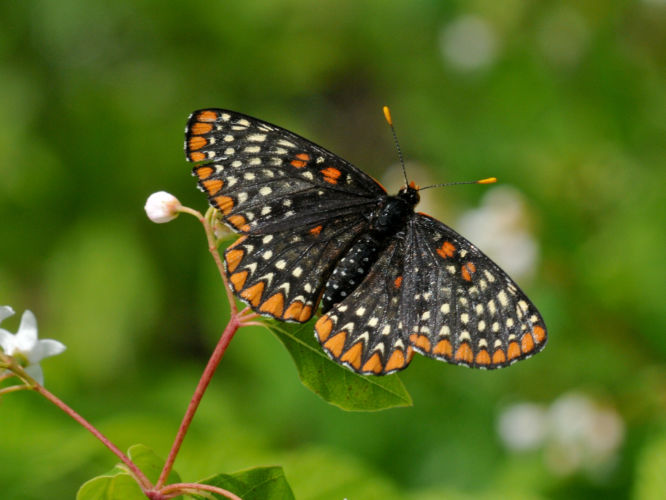
Baltimore Checkerspot
The Baltimore Checkerspot is a black butterfly with orange on the edges of its wings, a few orange spots closer to the body, and several rows of white spots. This butterfly looks very similar from above (dorsal side) and below (ventral side). It inhabits wetland areas where its hostplant turtlehead grows. The Baltimore Checkerspot is one of the easiest butterflies to identify.
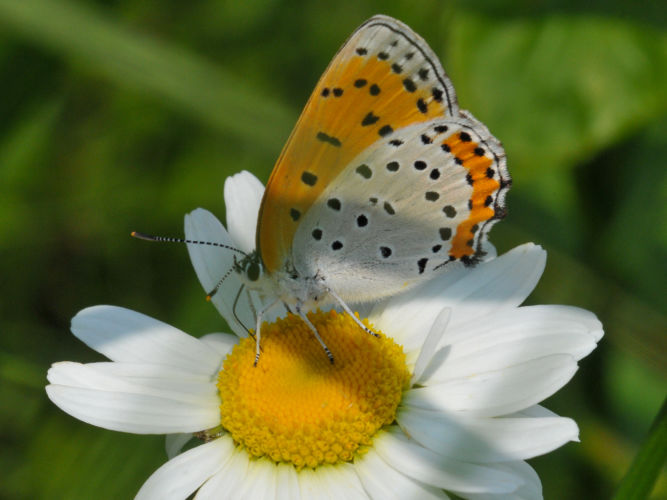
Bronze Copper
The Bronze Copper is the largest of our coppers. Males and females look quite different from above; the males are bright orange/brown with indistinct black spots, while the females are very bright copper with dark spots. Below, males and females are similar: the hindwing has a very wide orange band along the wing’s edge with an otherwise light gray background with dark spots.
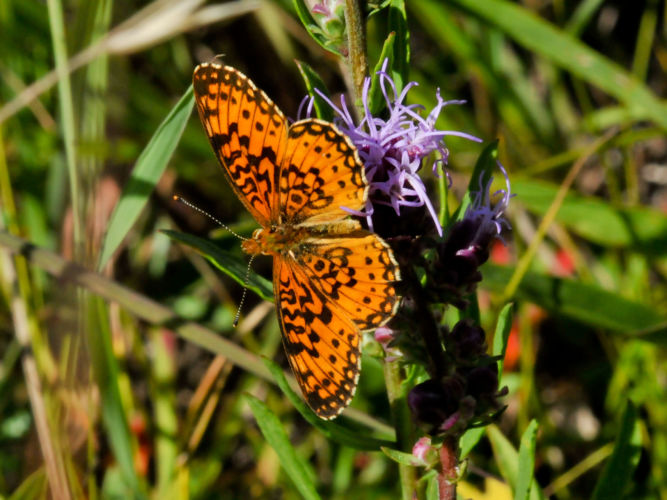
Silver-bordered Fritillary
Silver-bordered Fritillaries are mostly orange with dark veins and spots and a distinctive light border. Like all the fritillaries in Wisconsin, this species uses violets as a host plant. The Silver-bordered Fritillary is about half the size of its more recognizable cousin, the Great Spangled Fritillary, and is most likely confused with the similarly-sized Meadow Fritillary.
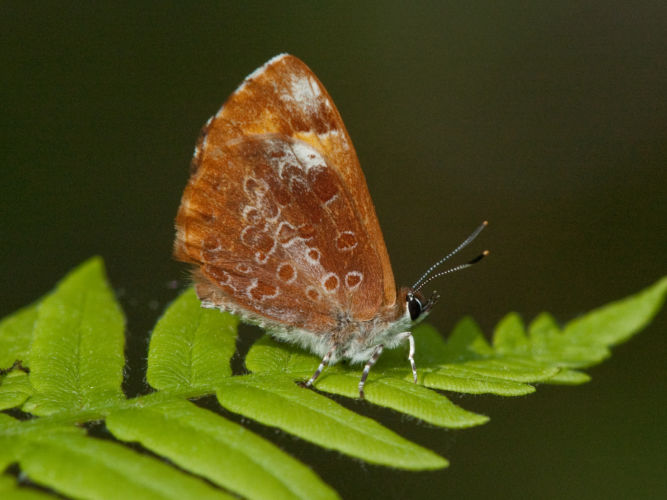
Harvester
Harvesters are the only carnivorous species of butterflies in North America. As a caterpillar, this species feeds solely on wooly aphids often found on alders in wetland soils. They are orange and black above; below, they are orange with distinctive darker orange spots ringed with white. You can spot Harvesters throughout Wisconsin. They are one of the most likely butterflies to land on you.
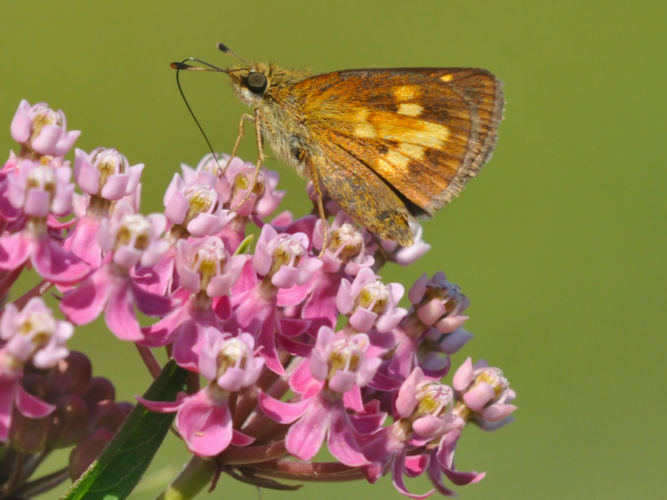
Mulberry Wing
The Mulberry Wing is one of the sedge skippers, a group of butterflies whose host plants are sedges in wetland areas. On the hindwing below, this species is a reddish-brown color with a yellow area that looks like an airplane. Above, the wing is mostly dark with a few light spots. The Mulberry Wing is a weak flier compared to many other skippers. You might see it moving slowly through the thick sedges.
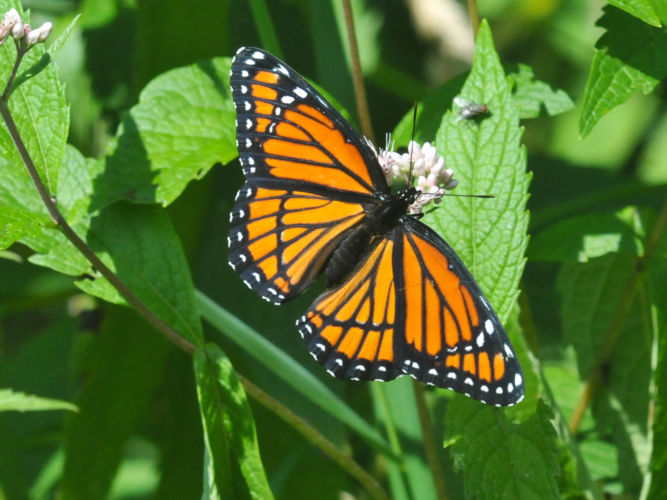
Viceroy
A Viceroy is an orange butterfly with heavy black veins, best known as a Monarch mimic. It differs from a Monarch by having a dark line through the hindwing; it is also slightly smaller than the Monarch. Look for Viceroys throughout the state in wetland areas where willows—their primary hostplant—are abundant.
Other notable Wisconsin butterflies
Wisconsin boasts some other notable wetland butterflies with more specific habitats and/or smaller numbers. Bog species are found mostly in northern Wisconsin and neighboring states where most bogs occur. Some species, like Brown Elfin, Jutta Arctic, Freija Fritillary, and Frigga Fritillary, are seen in bogs only in the springtime. In late spring or early summer, you may find Bog Fritillaries, Bog Coppers, and Dorcas Coppers in these same habitats. The Swamp Metalmark and Poweshiek Skipperling are endangered in Wisconsin and have limited ranges. The Swamp Metalmark is now seen in only a handful of locations in the state, while nobody has observed the Poweshiek Skipperling for several years. A third wetland species, the Purplish Fritillary, was discovered in Wisconsin in 1991 by Robbye Johnson in Douglas County and was found regularly until the last decade. Today it is a rare find indeed.
Related content
Wetland Coffee Break: Wetland butterflies of Wisconsin
Mike Reese, author of the article above, gives a presentation on wetland butterflies in Wisconsin.
Six amphibian species you can find in Wisconsin
How caring for your wetlands helps monarch butterflies

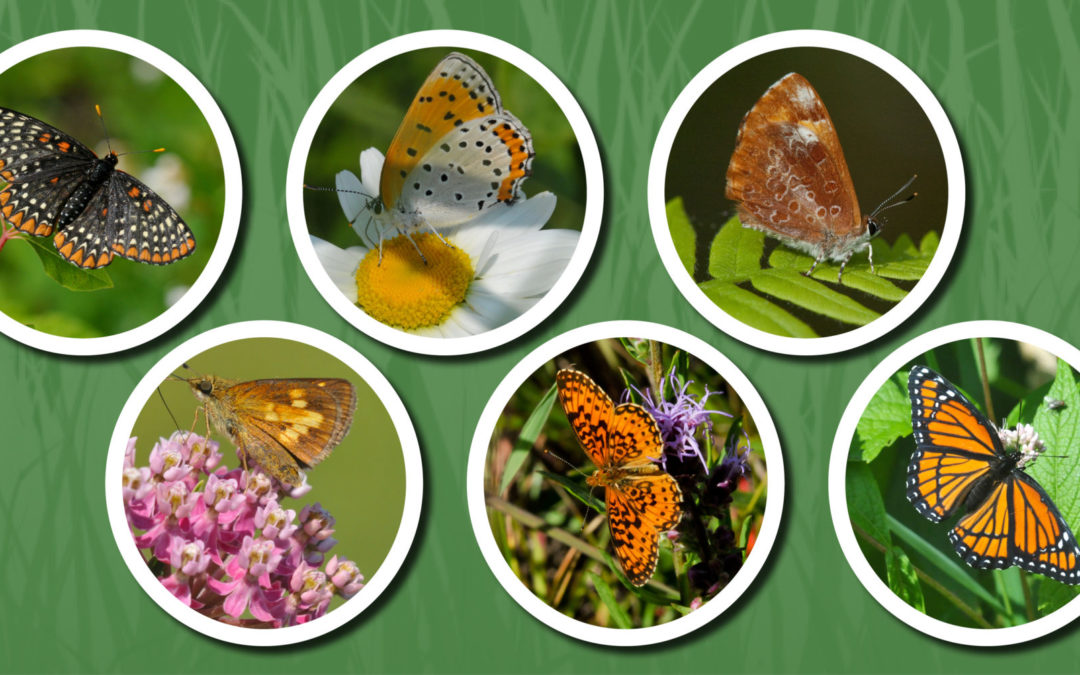
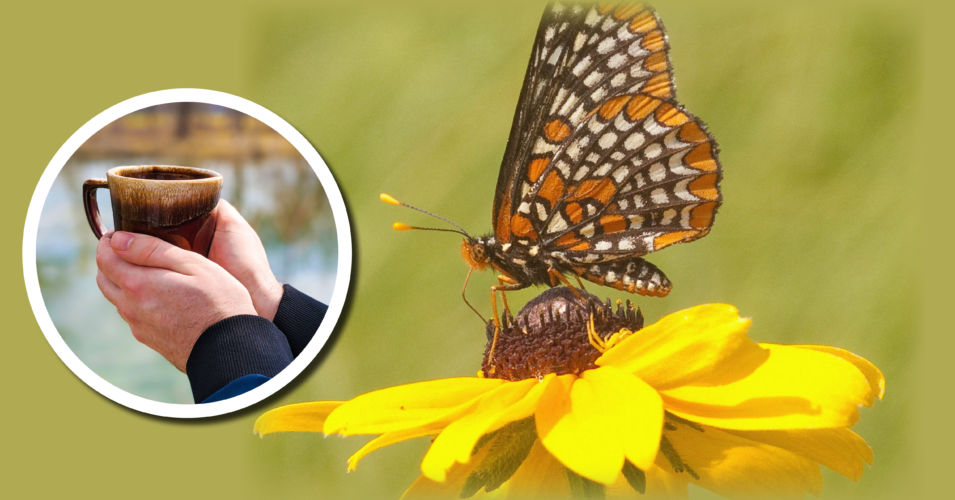
![Wood-Frog-Allen-Sheldon[1]](https://www.wisconsinwetlands.org/wp-content/uploads/2017/04/Wood-Frog-Allen-Sheldon1.jpg)
